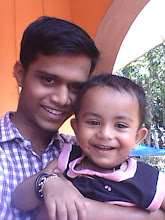ORGANIZATION STRUCTURE & CULTURE
An
organizational structure defines how job tasks are formally divided, grouped
and coordinated
Elements
of organizational structure
•
Work
specialization / Division of Labor
•
Departmentalization
•
Chain
of command
•
Span
of control
•
Centralization
and decentralization
•
Formalization
Formalization
•
the
degree to which jobs within the organization are standardized
•
If
a job is highly formalized, then the job incumbent has a minimum amount of
discretion over what is to be done
•
Where
formalization is low, job behavior are relatively non-programmed and employees
have a great deal of freedom
Organization
Culture
It
refers to a system of shared meaning held by members that distinguishes the
organization from other organizations
Features
of OC
•
Innovation
and risk taking
•
Attention
to detail
•
Outcome
orientation
People orientation
•
Team
orientation
•
Aggressiveness
•
Stability
•
Innovation
and risk taking: the degree to which employees are encouraged to be innovative
and take risks
•
Attention
to detail: the degree to which employees are expected to exhibit precision,
analysis and attention to detail
•
Outcome
orientation: the degree to which management focuses on results or outcomes
rather than on the techniques and processes used to achieve those outcomes
•
People
orientation: the degree to which management decisions take into consideration
the effect of outcomes on people within the organization
•
Team
Orientation: the degree to which work activities are organized around teams
rather than individuals
•
Aggressiveness:
the degree to which people are aggressive and competitive rather than easygoing
•
Stability:
the degree to which organizational activities emphasize maintaining the status
quo in contrast to growth





0 comments:
Post a Comment